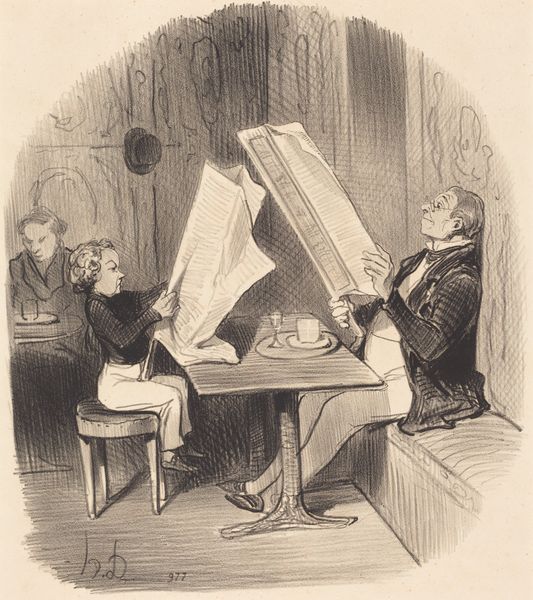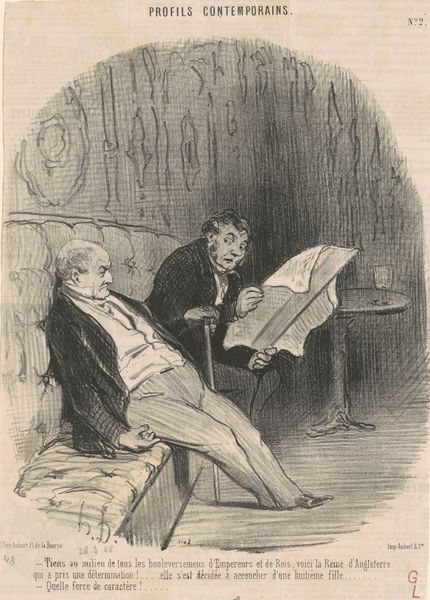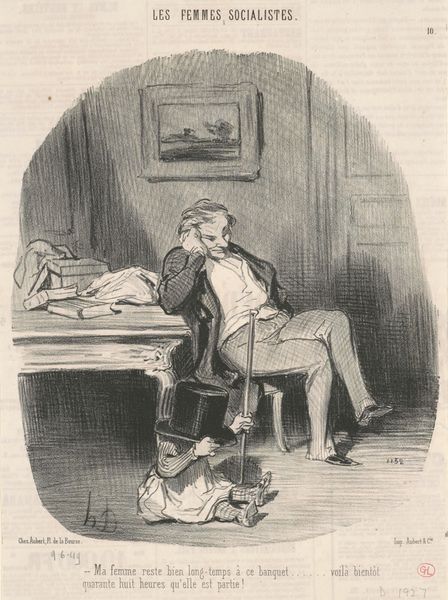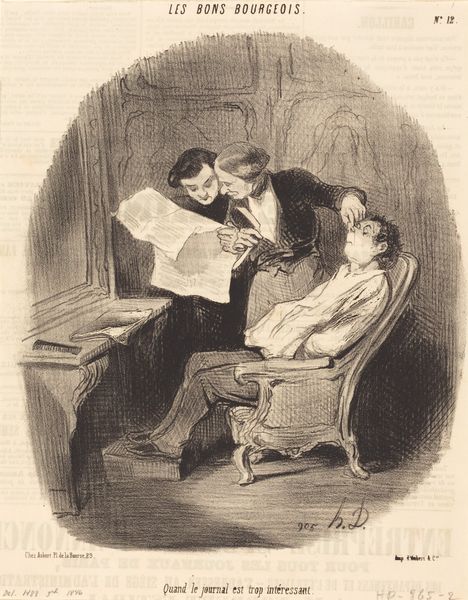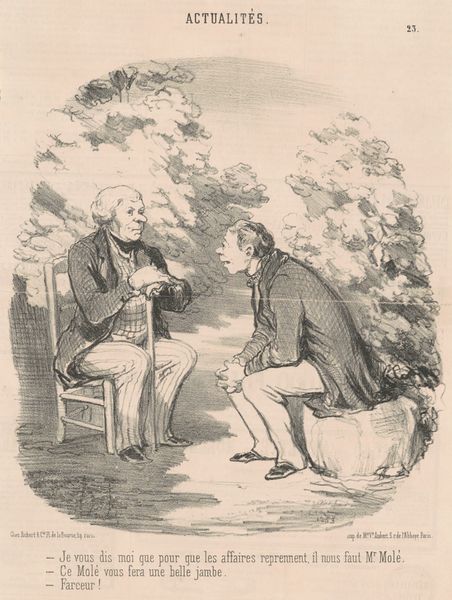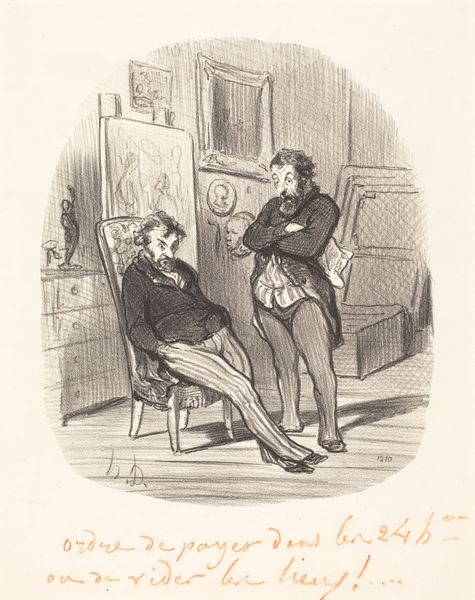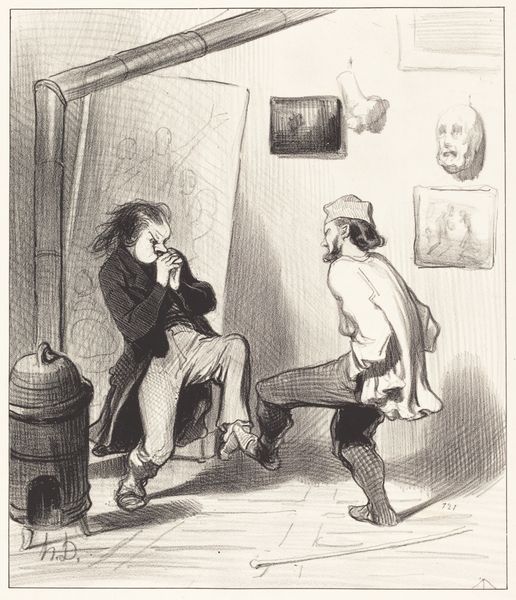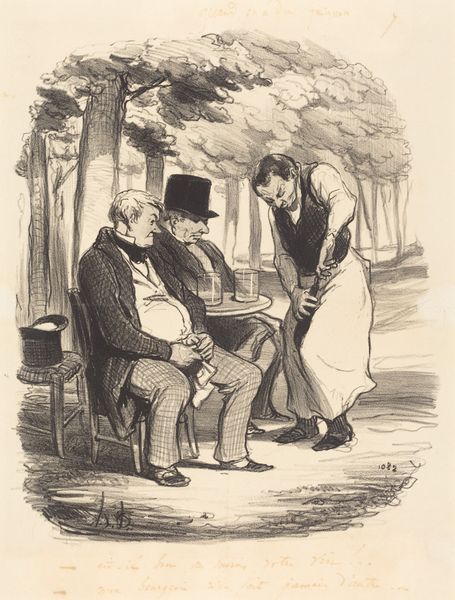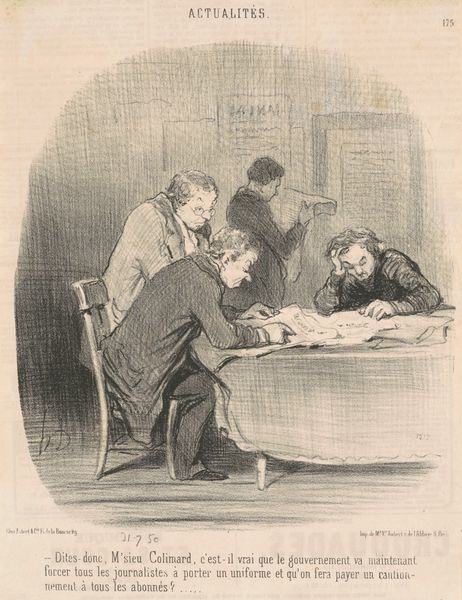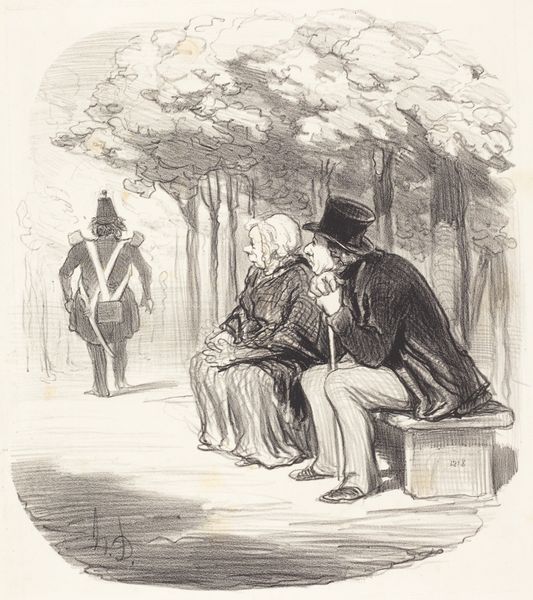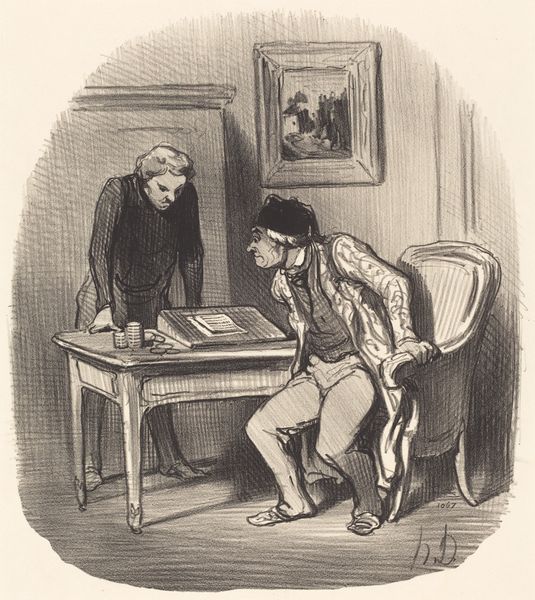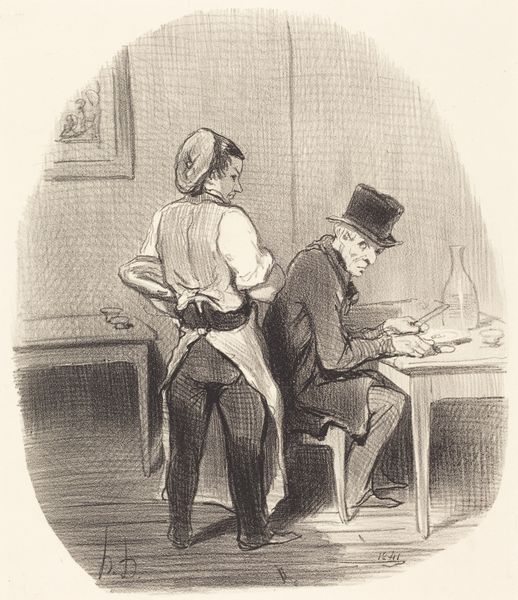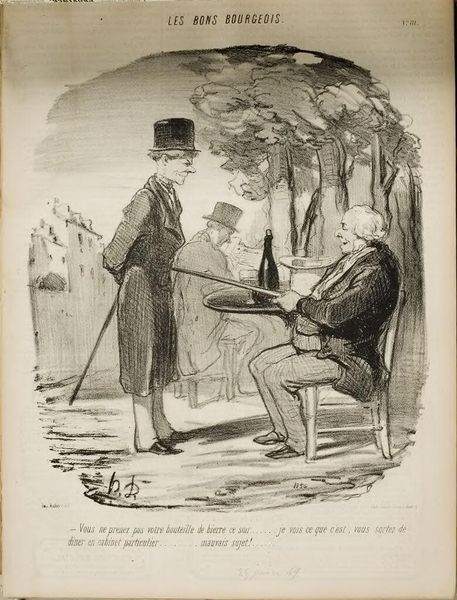
This is What a Bourgeois Considers a Small Distraction, plate 14 from Les Bons Bourgeois 1846
0:00
0:00
drawing, lithograph, print, paper
#
drawing
#
flâneur
#
narrative-art
#
lithograph
# print
#
caricature
#
paper
#
romanticism
#
france
#
line
#
genre-painting
Dimensions: 257 × 217 mm (image); 338 × 259 mm (sheet)
Copyright: Public Domain
Curator: Here we have a lithograph by Honoré Daumier, created in 1846, titled "This is What a Bourgeois Considers a Small Distraction, plate 14 from Les Bons Bourgeois." It’s currently housed at the Art Institute of Chicago. Editor: Immediately striking is the scene’s reliance on dense hatching, isn't it? A real flurry of lines making up those bourgeois and their shaded leisure spot. And note the papers; they look almost comically large. Curator: The lithographic process was crucial. Daumier exploited its capacity for mass production. Consider how this artwork would have been consumed: printed in a series and distributed to a large segment of the Parisian public, offering a visual commentary on social habits and class distinctions. Editor: Exactly. And those quickly reproduced lines gave Daumier's work an accessible form. This artwork belongs to a series ridiculing the bourgeoisie of the era; observe how Daumier utilizes caricature to mock their supposed intellectual pursuits. He seems especially critical of the materials these bourgeois consider to be enlightening. Curator: The choice of lithography connects to the very subject he depicts. This work is one of a set and it circulated widely within the rising middle class Daumier skewers, blurring lines between "high" and "low" art production. This is not just about aesthetic value, but about artistic means serving as cultural critique, no? The act of printing and distributing itself becomes a part of the satire. Editor: Certainly, the socio-political function outweighs any concerns about traditional artistic craft here. It forces us to reconsider art’s public role. Beyond the crosshatching and the inky textures, you see a real questioning of how institutions—and here, media outlets—shape societal perspectives and normalize class behavior. I am reminded that this artist used images as weapons of dissent and humor. Curator: Daumier surely pushed the definition of art and it is useful for considering class. Editor: Well, on that note, I think we can see the artist clearly prompting us to engage critically with art's very public and political essence.
Comments
No comments
Be the first to comment and join the conversation on the ultimate creative platform.
